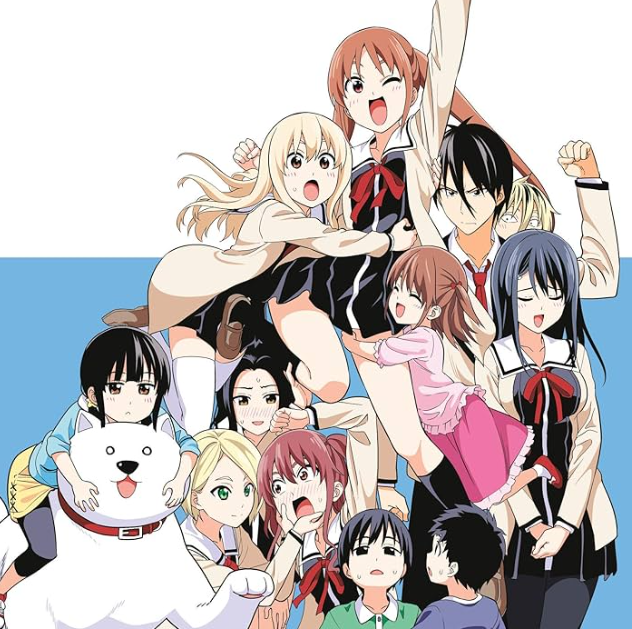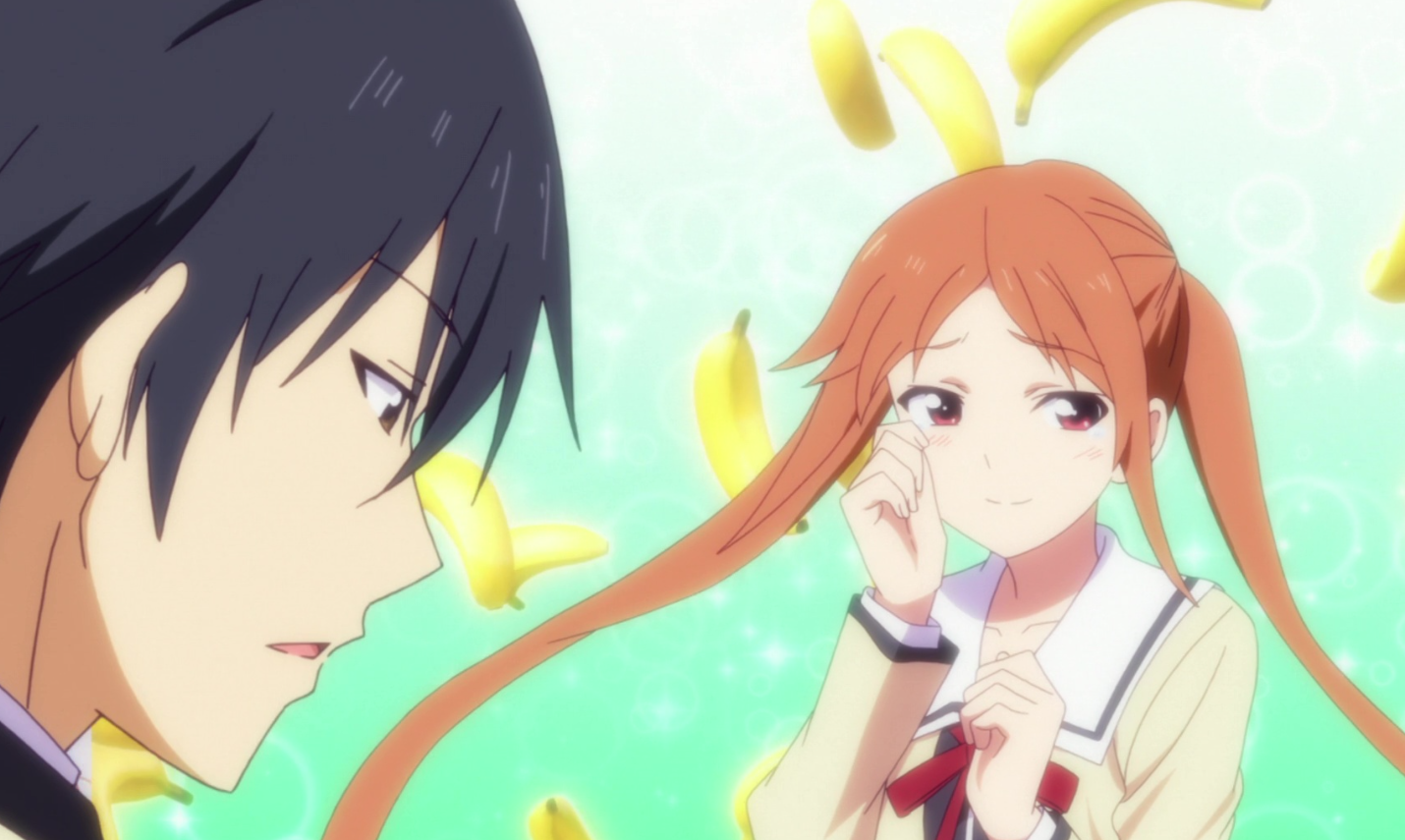Aho-Girl, a popular Japanese manga series, has garnered attention due to its unique, comedic storyline and interesting characters. Authored by Hiroyuki, the manga series was initially launched in 2012 and ran until 2018. The primary protagonist of the series is Yoshiko Hanabatake, a high school girl who is undeniably dim-witted yet cheerful, giving the series its title, “Aho-Girl,” which literally translates to “Dumb Girl” in English. The plot primarily revolves around Yoshiko’s daily life and her interactions with her classmates, especially her childhood friend, Akuru Akutsu, who is often driven to frustration by Yoshiko’s lack of intellectual prowess.
The charm of the manga series lies in its humor, which is largely derived from the characters’ absurdities and the non-stop antics of the main character, Yoshiko. This upbeat and comical tone has contributed to the series’ popularity among manga enthusiasts.
Subsequently, the manga’s success led to it being adapted into an anime series in 2017. Produced by Diomedea and directed by Keizou Kusakawa, the anime adaptation closely follows the manga’s storyline, bringing the characters and their hilariously absurd situations to life. The anime was well-received by fans, who appreciated how faithfully it mirrored the original manga. It has also been dubbed in English, expanding its reach to a wider audience.
Moreover, Aho-Girl has been adapted into a live-action drama series in Japan. Premiered in 2020, the live-action series takes a more realistic approach to the characters and their daily lives while maintaining the humor and charm of the original manga. The live-action adaptation’s cast includes notable Japanese actors and actresses, further increasing its appeal to fans of the original manga and anime.
In addition to its anime and live-action adaptations, the manga has also been translated into several languages, allowing it to reach a global audience. The series has been praised for its unique comedic style and its characters, whose ridiculous antics and interactions create a distinctly light-hearted and entertaining atmosphere that appeals to a wide range of readers and viewers.
Overall, Aho-Girl’s success is testament to the power of humor in storytelling. Despite its seemingly simple premise and characters, the series has managed to captivate readers and viewers through its comedic narrative and has spawned various adaptations that have further expanded its popularity. Whether it’s in manga form, as an anime, or as a live-action series, Aho-Girl continues to entertain with its unique blend of humor and absurdity.

Overview of the Manga Series and Adaptations
Manga, a Japanese style of comic books and graphic novels, has gained immense popularity worldwide. A multitude of genres, intricate artwork, and engaging storytelling formats have made Manga a significant part of contemporary pop culture. The Manga series, typically serialized in large anthologies, cover a wide array of topics ranging from fantasy, science fiction, romance to historical dramas. These series are often collected in volumes and published as standalone books, further broadening their reach among enthusiasts.
Over the years, many successful Manga series have been adapted into various forms of media, including animated TV shows (Anime), films, games, and even theatrical performances. Anime adaptations are particularly popular, bringing to life the vivid illustrations and dynamic storylines of Manga, often enhancing the narrative through voice acting, sound effects, and music. Some Manga series have been adapted into live-action films or TV series, with actors portraying the characters and events of the Manga.
Additionally, many Manga series have been translated into multiple languages, making them accessible to a global audience. The digitalization of Manga has also played a significant role in its expansion, with numerous platforms offering digital Manga series, which readers can access from anywhere in the world.
Merchandising is another significant aspect of Manga adaptations. Posters, action figures, clothing, and other merchandise featuring beloved Manga characters have become highly popular among fans, contributing to the Manga industry’s overall growth.
In conclusion, Manga series and their adaptations have not only revolutionized the comic book industry but have also significantly influenced various media forms, including animation, movies, and gaming. The versatility and global appeal of Manga ensure that it remains a vital part of pop culture, continuing to entertain and inspire audiences worldwide.
Synopsis and Plot Summary
A synopsis and a plot summary are integral components of storytelling in literature, film, theatre, and other artistic mediums. While they may seem similar, they serve distinct purposes and contain different levels of detail. A synopsis is a brief overview of the major points of a narrative. It is typically used in the initial stages of a project to provide an idea of its direction. It usually includes the main characters, setting, and key events, without revealing the detailed twists and turns of the plot. It remains high level and offers a concise, broad perspective of the story.
On the other hand, a plot summary delves into the narrative in more depth. It is a detailed description of the storyline, including the main events, conflicts, and resolutions. It is chronological, following the order of the story and provides the reader with a comprehensive understanding of the narrative. A plot summary may also reveal significant plot twists and the ending of the story.
In essence, a synopsis is a tool to pique interest, used often in pitching scenarios, while a plot summary is more of a detailed roadmap of a story. Both elements are crucial in different stages of the creative process. They aid in understanding the narrative arc, helping writers, producers, and directors visualize and shape the story. Meanwhile, they also assist audiences in deciding whether a particular book or film aligns with their interests. Despite their differences, both the synopsis and plot summary play vital roles in the storytelling process.

Characters and Their Roles
Characters and their roles are the backbone of any narrative, whether it’s a novel, a film, or a play. They are the vessels through which the author or writer communicates their story, ideas, and themes. Each character in a narrative has a specific role to play, which contributes to the overall development of the plot. Characters can be protagonists, antagonists, secondary characters, or even mere background figures, each contributing to the dynamics and progression of the story in different ways.
The protagonist, often the main character, is the one who drives the story forward and faces the central conflict. The antagonist is the character who opposes the protagonist, creating tension and conflict. Secondary characters or supporting characters, on the other hand, provide depth to the narrative and help to further develop the main characters. They may also play critical roles in unfolding the plot. Background characters, while not having a significant impact on the plot, provide realism and context to the story. The role of a character is also determined by their personality traits, motivations, and interactions with other characters. A well-crafted character, regardless of their role, possesses depth and complexity, which makes them relatable and engaging to the readers or viewers.
It is through these characters and their roles that a narrative comes to life, and the audience finds a connection, enabling them to delve into the world of the story. Thus, understanding the roles of characters is crucial for any reader, viewer, or analyst of narratives, as it provides key insights into the story’s structure, themes, and messages.
Major Characters and Their Development
Major characters and their development play a pivotal role in shaping the narrative and overall success of a story, be it in a novel, movie, or play. The characters are the vessels through which the author or scriptwriter communicates the tale, evoking emotions, and connecting with the audience or readers. An engrossing, well-developed character, brimming with depth and realism, can leave a lasting impact even after the story concludes.
Character development is the technique of gradually unfolding a character’s nature, traits, and backstory, revealing their complexities, flaws, and strengths. It’s not just about establishing a character’s personality at the onset but is an ongoing process that unfolds as the plot progresses. This evolution frequently involves major changes in the character’s attitudes, behaviors, or beliefs, often triggered by pivotal events or interactions with other characters within the narrative.
A notable example of character development is Ebenezer Scrooge from Charles Dickens’ ‘A Christmas Carol.’ Scrooge begins as a miserly, cold-hearted individual, but as the story progresses, he undergoes a significant transformation, becoming kind, generous, and benevolent. This transformation is a result of his encounters with the ghosts of Christmas Past, Present, and Yet to Come, which force him to confront his life and choices.
Another example is Elizabeth Bennet from Jane Austen’s ‘Pride and Prejudice.’ Her initial prejudice towards Mr. Darcy, based on first impressions and rumors, gradually changes as she discovers his true character and virtues. This shift in Elizabeth’s perception is a crucial part of her development, reflecting her maturation and evolving understanding of the world.
In essence, major characters and their development provide the emotional core and driving force of any narrative, creating a dynamic and engaging storytelling experience. They humanize the narrative, lending it depth, and relatability, while also driving the plot, themes, and overall direction of the story.

Manga Series Details and Themes
Manga series, originating from Japan, are visually enticing graphic novels that have captured the attention of global audiences. These series are crafted meticulously, with remarkable detail in both artwork and storyline. The beauty lies not just in the stunning illustrations but also in the richly woven themes that these series explore. From fantasy to horror, romance to science fiction, drama to adventure, the thematic range of manga is comprehensive and diverse.
Fantasy manga series like “One Piece” and “Naruto” showcase themes of friendship, perseverance, and strength, centering around epic adventures and battles. Romance manga such as “Kimi ni Todoke” explore the subtleties of love and the journey of human emotions. Psychological thrillers like “Death Note” delve into the complexities of the human mind, morality, and power dynamics. The series’ intricate details, including character development, plot twists, and underlying messages, make manga a unique reading experience.
Each manga series has its own distinct art style that further enhances its themes and characters. The artwork can range from flamboyantly colorful and detailed to minimalistic and monochrome, each style adding depth to the narrative. The visual narrative in manga series also extends to the characters’ expressions and movements, which are often exaggerated to convey emotions effectively.
The universality of manga series’ themes contributes to their global popularity. They provoke thought, stir emotions, and offer different perspectives on life, making them relatable to a wide range of audiences, irrespective of age or culture. In essence, manga series are not just entertaining; they are also a powerful medium of storytelling that explores various facets of human life and emotions. Their rich details and diverse themes make them an engaging form of art and literature that continues to captivate millions around the world.
Anime Adaptation and Its Features
Anime adaptations refer to the process of transforming different forms of media, such as manga, light novels, video games, or even live-action series, into animated television series or films. This transformation is a prevalent practice in Japan’s entertainment industry and has resulted in some of the most iconic and globally recognized anime series. The key features of anime adaptations often revolve around accurately capturing the original source material’s aesthetic and narrative essence.
The creators meticulously illustrate the characters, settings, and scenarios to match the original work’s visuals. Similarly, the plotlines are typically closely followed, preserving the source material’s storyline and themes. Nevertheless, some adaptations might introduce minor tweaks or fillers to create a more cohesive narrative or to prolong the series’ lifespan.
Another significant characteristic of anime adaptations is that they often serve as a promotional tool for the original content. For instance, manga sales often see a surge following the release of an anime adaptation.
Moreover, anime adaptations have a unique way of bringing the original work to life through their use of animation techniques, color palettes, sound effects, and voice acting. This multi-sensory experience adds an extra layer of depth and immersion, enhancing the audience’s connection with the characters and the story.
However, it’s important to note that the success of an anime adaptation is highly dependent on its production quality. A well-executed adaptation can elevate the original work, while a poorly done adaptation can tarnish its reputation. Therefore, the choice of animation studio, director, and voice actors plays a crucial role in determining the adaptation’s overall quality and reception.
In conclusion, anime adaptations are a vital part of the anime industry, serving as a bridge between different forms of media and introducing audiences worldwide to a wide array of stories and characters. Through their unique features, they provide a captivating and immersive viewing experience that goes beyond simple entertainment.
